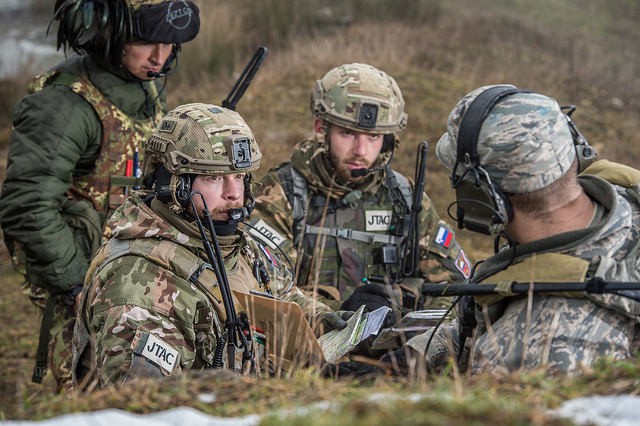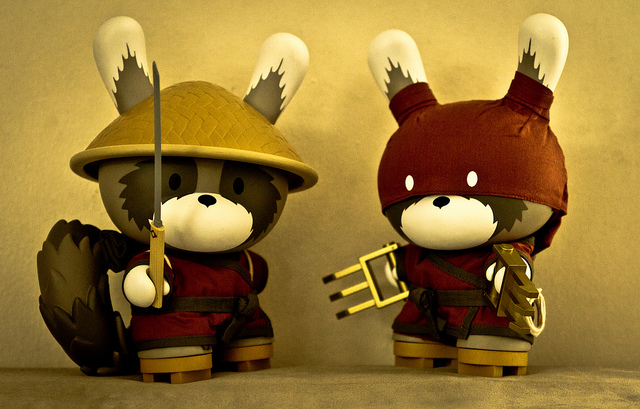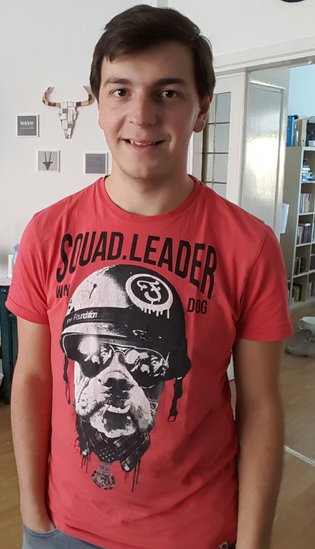Written by Chad van Gessel, Behaviour Coach, November 2016
Picture credits at the end of the post. No modifications were made to any of the illustrations.
About Chad
Chad studied Animal Management, has his own dog food delivery company here in The Hague, works for the Dierenambulance, and is one of our Behaviour Coaches at the dog training school.
Step in the behaviour coach
Picture this: You are teaching a parenting class to new parents. There are four or five sets of parents present, each one with a toddler. You’re trying to explain to the parents how they can best handle a temper-tantrum. I say trying because toddler one and four are pulling faces at each other, toddler three keeps wandering off, toddler two is crying and toddler five is pulling at his dad’s pants asking for his bottle.
Now replace all the toddlers with dogs and you get an idea of what professional trainers face every week. If the trainer were to spend all their time re-focusing, settling, entertaining or fetching the dogs (be they puppies, juveniles or adults) a lesson would never be taught. They can’t leave it all up to the parents/owners because they wouldn’t have a clue what was going on, and sometimes, despite their best intentions, they notice problems too late.

Step in the Behavioural Coach. That’s me; it’s a swanky yet apt title. While most will see the coach running around attending to dogs or giving instruction they will assume that they are merely the Instructors assistants. Now don’t get me wrong, that is part of it but not all of it.
My job is to keep an eye out on all the dogs and their owners and recognise, pre-empt, prevent and solve problems. I then educate the owner on how this was done and on best practice when handling their dog. I also advise them when they are having trouble and while doing so listen to what the instructor is saying so that I know what is going on in the lesson.
It sounds more complicated than it is, but it isn’t simple. You need to be alert, you need to be tuned into the animals present and you need to be able to keep your cool. You’re no help to anyone if you panic or run around franticly. All this does is upset the owners and their dog and ultimately causes more problems.
To give a clear idea of what it is exactly that a Behaviour Coach is and does I’ll walk you through an evening at Oh My Dog School. Each week Laura-Anne sends us an attendance list. This list lets us know which dogs are coming to which class and if there are any new comers. There are only ever new comers in the puppy class. The obedience class is the same class for the duration of the course.
Behind the scenes at the dog training school
We meet up before class and set-up the training field for the evening, this is also why an attendance list is important. If we noticed that a week earlier two dogs kept egging each other on or a pup was too scared by everything to do anything we can set up the field accordingly. We do this by determining who will go where and setting up barriers that reduce stimuli.
Set-up is then followed by a briefing. Here we discuss the lessons: what is being taught, who are the new comers, any issues, successes or pointers from the previous lesson and general housekeeping. The behaviour coaches are then assigned a class (if it is a different class than the week before we brief each other on what went down). Set-up, briefing and assignments done it is time for the night to begin.

The dogs arrive and the fun begins. We place the dogs strategically; help the owners settle them down and wait for the lesson to begin. The instructor starts talking and we start watching; armed with knowledge of dog behaviour, quick fixes for problems, brain games, toys and tasty treats we are ready for anything.
A dog behaviour troubleshooting ninja
Puppy A is trying to get puppy B to play with him, but puppy B is not so keen. So, I silently move over to puppy A, crouch down and grab his attention. Puppy A is full of beans and needs to get rid of some energy. The best thing I can give him now is a brain game with tiny treats hidden inside. This will keep him busy and get rid of some energy.
Puppy C is whining, his owner is making all kinds of “no” noises, to get him to keep quite. Problem is the pup is whining because he has been trying to get his owners attention but the owner has been blind to his attempts. Whining is his next bet and BINGO attention. I go over and inform the owner that his pup isn’t just being well behaved sitting and looking at him every now and then, he is also checking in with the owner. A kind of dog “what’s up”. All he needs from you is to acknowledge this subtle cue and he’s cool.

I also add that this particular whine is looking for attention, if you “no” him then he is getting what he is looking for. He will then link whining with attention and do it more often. You get annoyed and pup doesn’t know why. By acknowledging his dog’s “what’s up” you can avoid this miscommunication.
Pup D yawns on occasion and is creeping behind its owner’s legs, the pup next to him is sniffing around its own blanket in search of treats. Although the pup isn’t doing anything to pup D, or even that close to him, the whole situation is a bit overwhelming for him and the pup next door is simply too close for comfort.
The owner thinks that the pup is simply tired and slightly shy. Although this could be the case the yawning and trying to hide (or make itself as small and unassuming as possible) is an indicator of stress. I move over from Pup C and create a barrier between pup D and his neighbour. This block should help him feel more comfortable and chill out a little.
It’s about giving the pups a learning environment in which they feel safe and secure
Now it’s time for the first exercise. This is how my evening goes. Noticing a problem, helping out, informing and then moving onto the next and then seamlessly joining in the lesson to help out with whatever exercise is on the agenda. I keep doing this to make the night run smoothly, not for the owners but for the pups.
If they are not in an environment that they feel safe and secure in then they won’t learn. If they don’t have a way to rid themselves of energy then it’s going to cause tension between them and their owner and they won’t learn. I am there to help the owner understand how their dog communicates with them, and help owner and dog work together.

The nights aren’t always glamorous; sometimes they are so chaotic that at the end you don’t know what’s up or down anymore. Other nights you are sitting next to a dog, pre-empting his barks to teach him that he doesn’t need to bark to get attention (no jokes I have done this). Each behaviour coach has his or her unique experiences and bad or good keep coming back.
Why I love the role?
I know I come back because I enjoy seeing the progress owner and dog make each week and seeing the lines of communication open up. Summing up, if you were to label a Behaviour Coach you could label us as highly skilled interpreters who improve human and dog relations.
Picture credits
- Crying baby: Courtesy of pinkpig0416 (Downloaded on 29 Nov 2016. Licence: CC0 Public Domain)
- Army debrief: Courtesy of 7th Army Training Command (Downloaded on 29 Nov 2016. Licence: CC BY 2.0)
- Cute ninjas: Courtesy of Guian Bolisay (Downloaded on 29 Nov 2016. Licence: CC BY-SA 2.0)
- Labyrinth: Courtesy of Alexas_Fotos (Downloaded on 29 Nov 2016. Licence: CC0 Public Domain)

